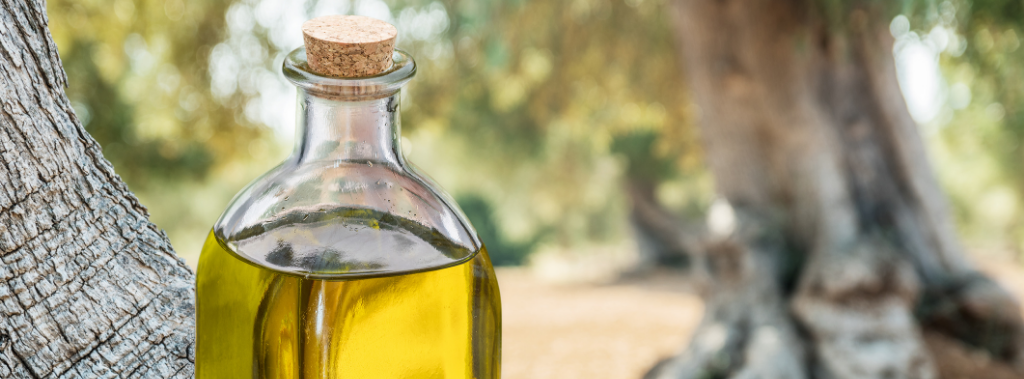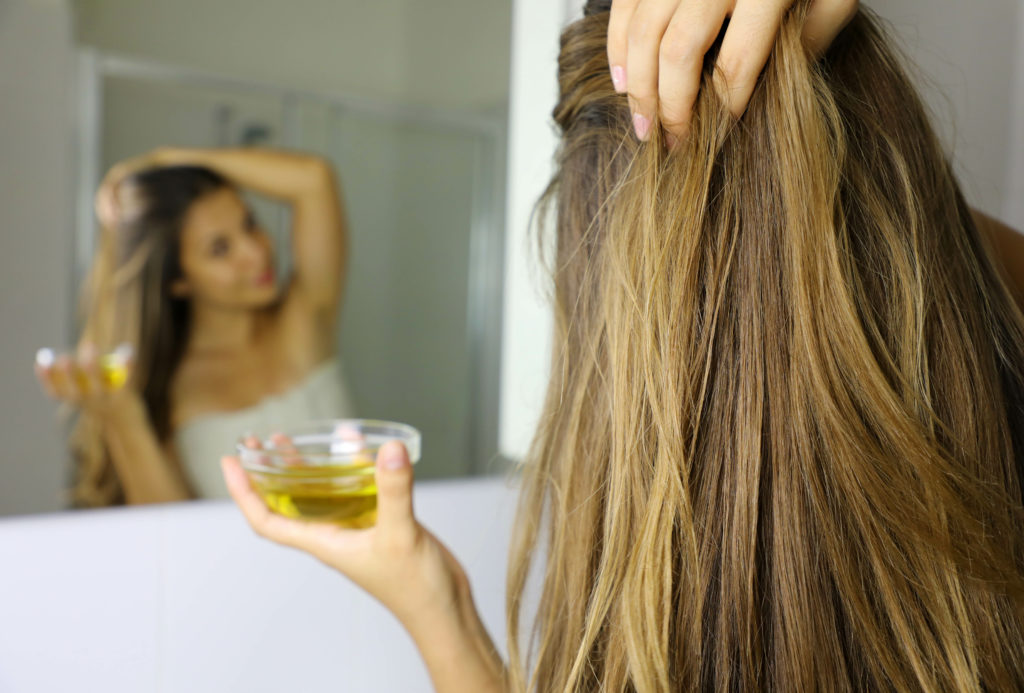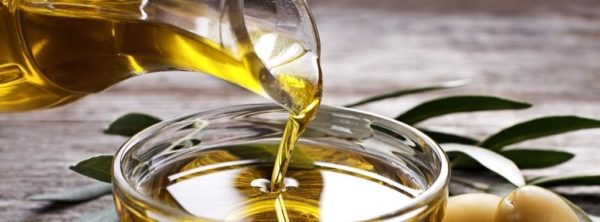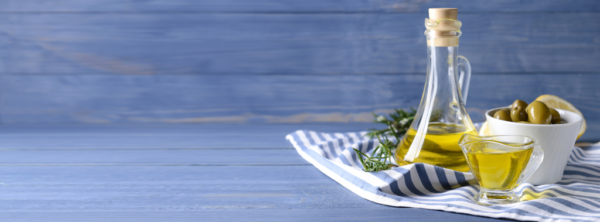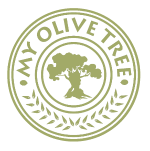While olive oil has been used for thousands of years, most of us only use it in select, tried and true ways, if at all. That does not have to be the case though. Olive oil is a versatile, easy to use ingredient that can be used both in the kitchen and beyond…
Join us as we explore ways YOU can use olive oil outside of your kitchen!
Ways YOU Can Use Olive Oil | Beyond the Kitchen
Most of us have used olive oil in the kitchen at some point or another. Many recipes call for it, and of course, there’s always some pan or other that needs greasing… but what other uses for olive oil outside of the kitchen?
Let’s take a look at a few ways you can use olive oil outside of the kitchen…
ANOINTING OIL
Many anointing oils contain olive oil as the main oil or one of the featured oils. If you find yourself out of your preferred anointing oil, olive oil is a wonderful substitute.
NOTE: As with all anointing oils, olive oil can stain certain clothing, or leave dark spots on other items if too liberally applied. If you are not sure if olive oil will stain something, do a test spot on an area not readily seen. If such a test is not possible, then research if olive oil will stain the material.
MOISTURIZING SKIN
Olive oil is a wonderful moisturizer, leaving skin soft and hydrated. Some people use olive oil as a replacement for lotions or other moisturizers, but it can also be used as an addition to your moisturizing routine or as a substitute for your preferred moisturizer if you run out unexpectedly.
Simply take a small amount of olive oil and rub in until absorbed to achieve even coverage and avoid potential staining of clothing or other items. Reapply as needed.
Olive oil can also be added to your bath. Pour in one or more teaspoons and swirl with hand to disperse and bathe as usual. By coming in contact with skin over the course of the bath the olive oil will leave skin refreshed.
NOTE: This method does not moisturize to the same level as the direct application method mentioned above. As with all bath oils it is best to check that the olive oil on the surface of the skin has been well absorbed to avoid any potential oil stains on other materials.
Hands and feet are often the first areas of our skin to suffer from dryness. To moisturize and/or to prepare for a manicure/pedicure, apply olive oil to the skin as a whole, rubbing until well absorbed. If needed, apply additional olive oil directly to the cuticles, rubbing until absorbed, to complete the process.
MOISTURIZING HAIR
Among other uses of olive oil, it can be placed on hair to moisturize, manage unruly frizz, or help split ends.
When hair moisturizing, it is best to begin with a small amount of olive oil, 1 to 2 tablespoons, and then work your way up if needed—as much as a ¼ cup could be utilized for long, thick hair.
Massage the oil into the hair, going down to the scalp if needed or desired. Short hair of only a few inches may not require combing, but for longer hair it is best to comb the oil through BEFORE washing hair.
Shampoo hair 1 to 2 times, depending on the amount of oil used and your desired results. If you have naturally dry hair, small amounts of olive oil can be added in place of, or in addition to, a conditioner.
Both methods are effective, but dry and thick or heavily processed hair will not only receive the most benefits, but will be better able to handle the moisture given when using olive oil as a conditioner than those with oily or thin hair.
NOTE: When applying as a conditioner: check that all the olive oil has been absorbed by the hair to avoid potential staining of materials; do not wear any clothes you mind having oil stains on UNTIL the olive oil has been worked into the hair; if leaving olive oil on hair prior to shampooing, pin hair up and/or cover it if not showering directly to avoid stains. When applying any hair oil, it’s best to wear old clothes that you do not mind staining.
To combat unruly frizz, either work olive oil into the hair as a conditioner or as a pre-shampoo moisturizer, OR work a small bit of olive oil into your hands and gently rub the affected hair in downward strokes.
For split ends, you can use the hair moisturizing techniques mentioned above or work the olive oil directly onto your split ends. If applying directly to your split ends, make sure to cover at least the last two inches of your hair. Allow hair to set before shampooing. Pin up hair OR place in a covering during the setting process to protect materials from staining.
NOTE: While pinning up or covering hair can protect clothes, it is still best to wear old clothes you do not mind staining.
MAKE-UP REMOVER
The area around your eyes is particularly sensitive, but not everyone can use even eye-safe facial cleansers to remove their make-up. If this is the case, or if you do not have access to your preferred cleanser, olive oil can be used as a safe alternative—as with all cleansers, avoid direct contact with the eye whenever possible and rinse with water should such contact occur.
Simply apply a small amount of olive oil—you can always add more—to a face cloth, cotton round, or even your fingers and gently rub around your eyes. As the make-up lifts, rinse with water to remove the traces.
Should any stubborn make-up remain, repeat the above steps. Not only will you come away with your make-up removed, but you will have soft, supple skin.
NOTE: This same process can be done over the entirety of your face if desired, but be aware that everyone’s skin is different. Most people do not break out from using olive oil, but some might. If you wish to use olive oil as a make-up remover, you may benefit from trying it out first on a small portion of your face, possibly near your hair-line, to ensure that it is right for your skin.
SHAVING CREAM REPLACEMENT
Three common reasons why people try olive oil in place of shaving cream are: sensitive skin, curiosity, or simply running out of their regularly used shaving cream. No matter what your reason is, olive oil is a great alternative to shaving cream.
Simply apply olive oil liberally to the area you are planning to shave, and shave as usual. Not only will your blade glide over the skin more easily, avoiding razor burns and bumps as a result, but olive oil will help protect your razor blades. A bonus usually not found with traditional shaving creams.
NOTE: Olive oil, as with any shaving cream, causes the blade to slide smoothly. While this typically is safer than the alternative, shaving should always be done with care to avoid nicks.
DIAPER RASH TREATMENT
Olive oil is great for sensitive and delicate skin, making it uniquely effective as a moisturizer for not only adults, but babies too. For diaper rash, gently apply a little olive oil to the affected area to not only moisturize but to help ease site irritation.
NOTE: As with any product that is new to a baby, it is best to carefully observe the effects.
Beyond these, other uses for olive oil range from fighting snoring, to putting extra shine on stainless steel or brass, to curing earaches… Making olive oil an item that goes beyond the kitchen!
Be sure to check out our olive oil options by clicking the link HERE
OR go to the My Olive Tree store!
